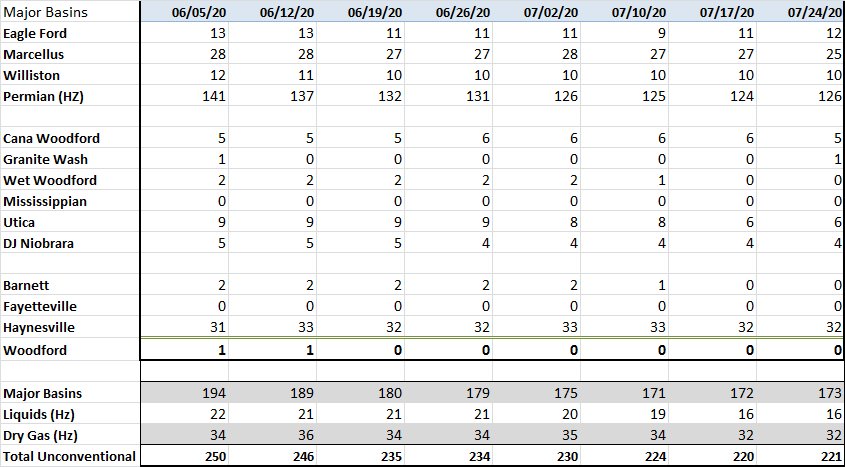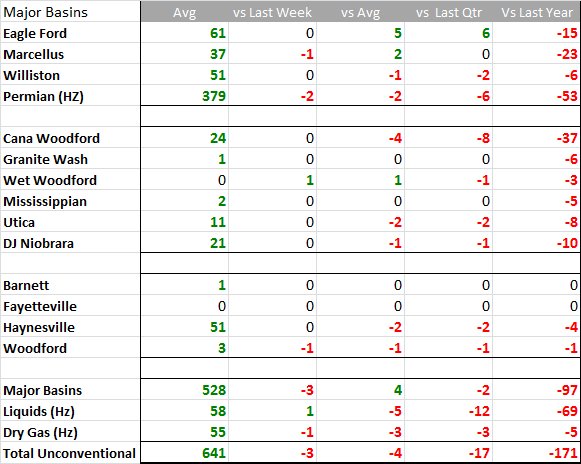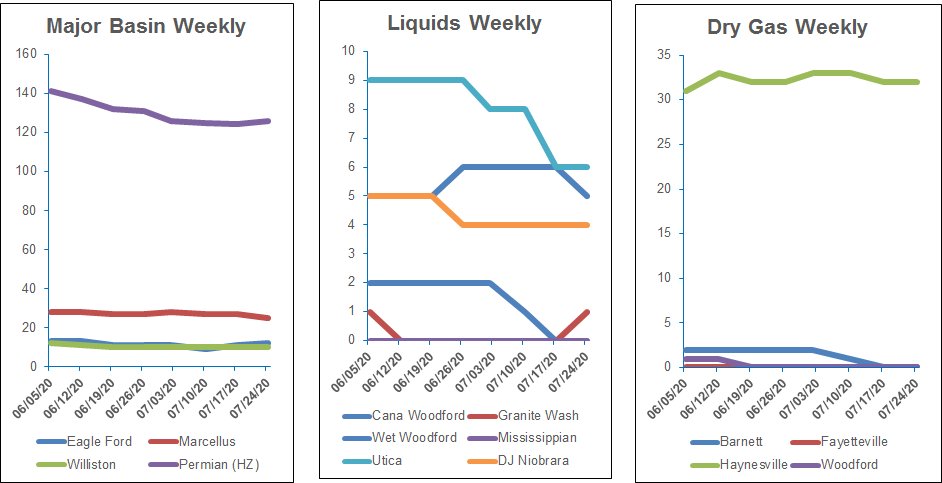
U.S. energy firms cut the number of oil and natural gas rigs operating to a record low for the 12th consecutive week.
According to the Energy Information Administration’s (EIA) short-term energy outlook for July, crude oil production in the U.S. will average 11.6 million bbl/d in 2020 and 11 million bbl/d in 2021. Output averaged 12.2 million bbl/d of oil in 2019.
However, if a federal judge is successful in shutting down the Dakota Access pipeline from early August until mid-2021 pending a new environmental impact study, production will likely be lower as Bakken operators shut in uneconomic volumes and shift investment to other areas, Enverus said.
On the natural gas front, the EIA forecasts production will fall by 3% this year to an average of 89.2 Bcf/d, with the decline driven by a drop in drilling activity and curtailments. In 2021, output will fall by 6% year-over-year.
Although U.S. energy firms added one oil rig in the first weekly increase since March, Enverus reported the number of oil and natural gas rigs operating continued its descent to a record low for the 12th consecutive week.
The U.S. oil and gas rig count, an early indicator of future output, fell by two to an all-time low of 251 in the week to July 24, according to data going back to 1940 from energy services firm Baker Hughes Co.
The rig count is 695 rigs, or 73%, below this time last year.
U.S. oil rigs rose to 181, while gas rigs fell three to 68, their lowest on record, Baker Hughes said citing data dating back to 1987.
Weekly

Trends


Recommended Reading
BP Restructures, Reduces Executive Team to 10
2024-04-18 - BP said the organizational changes will reduce duplication and reporting line complexity.
Matador Resources Announces Quarterly Cash Dividend
2024-04-18 - Matador Resources’ dividend is payable on June 7 to shareholders of record by May 17.
EQT Declares Quarterly Dividend
2024-04-18 - EQT Corp.’s dividend is payable June 1 to shareholders of record by May 8.
Daniel Berenbaum Joins Bloom Energy as CFO
2024-04-17 - Berenbaum succeeds CFO Greg Cameron, who is staying with Bloom until mid-May to facilitate the transition.
Equinor Releases Overview of Share Buyback Program
2024-04-17 - Equinor said the maximum shares to be repurchased is 16.8 million, of which up to 7.4 million shares can be acquired until May 15 and up to 9.4 million shares until Jan. 15, 2025 — the program’s end date.





